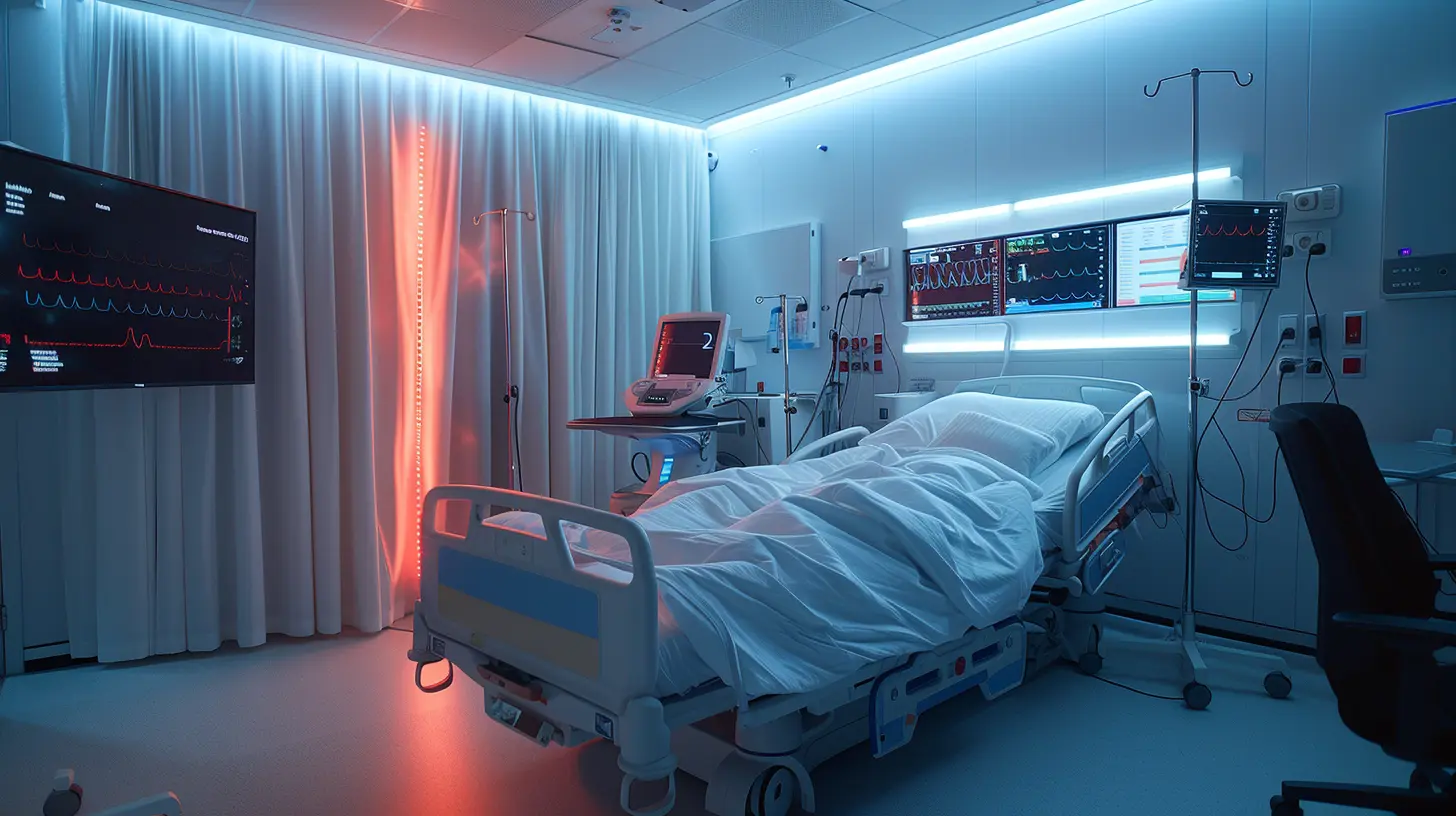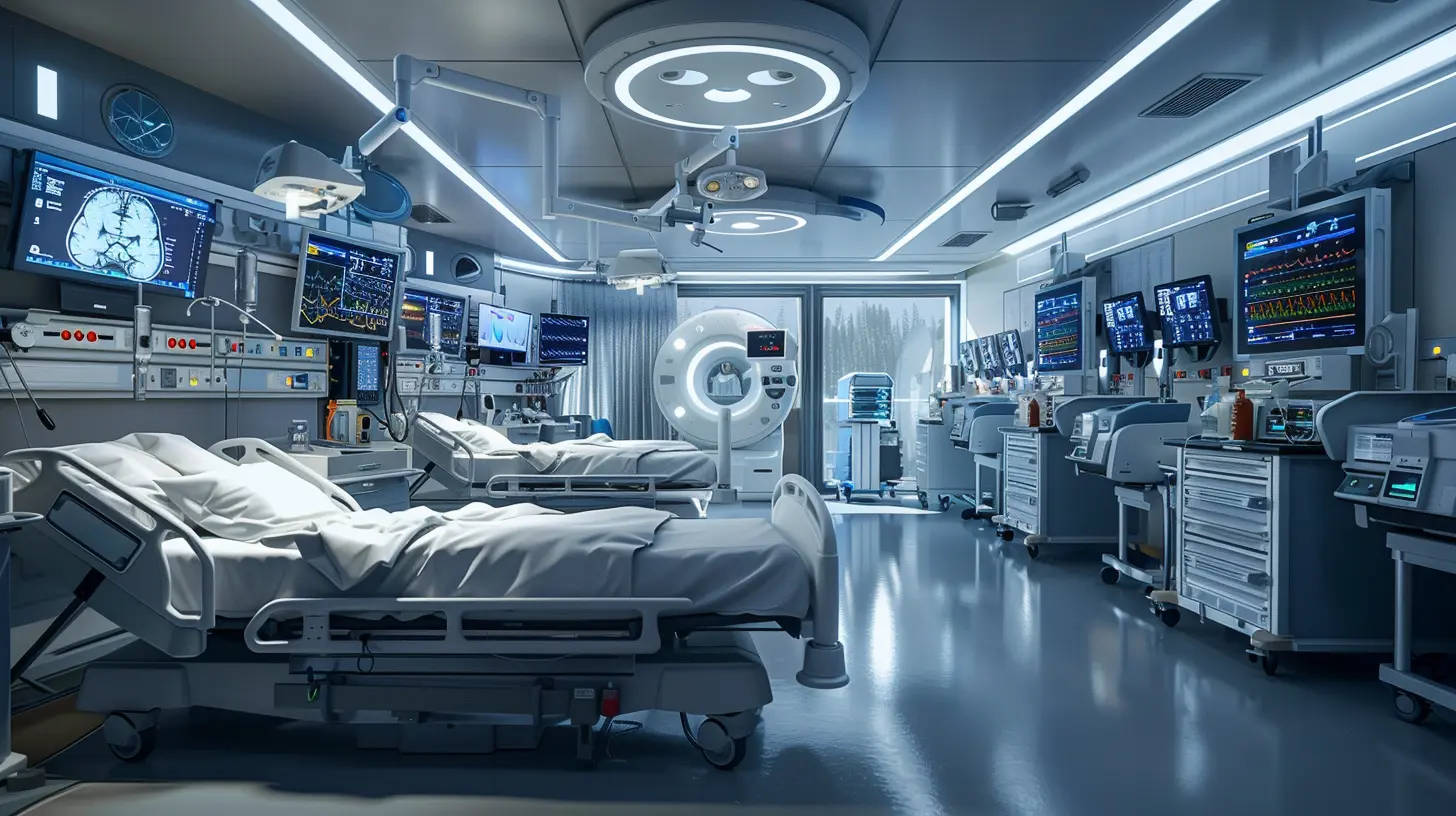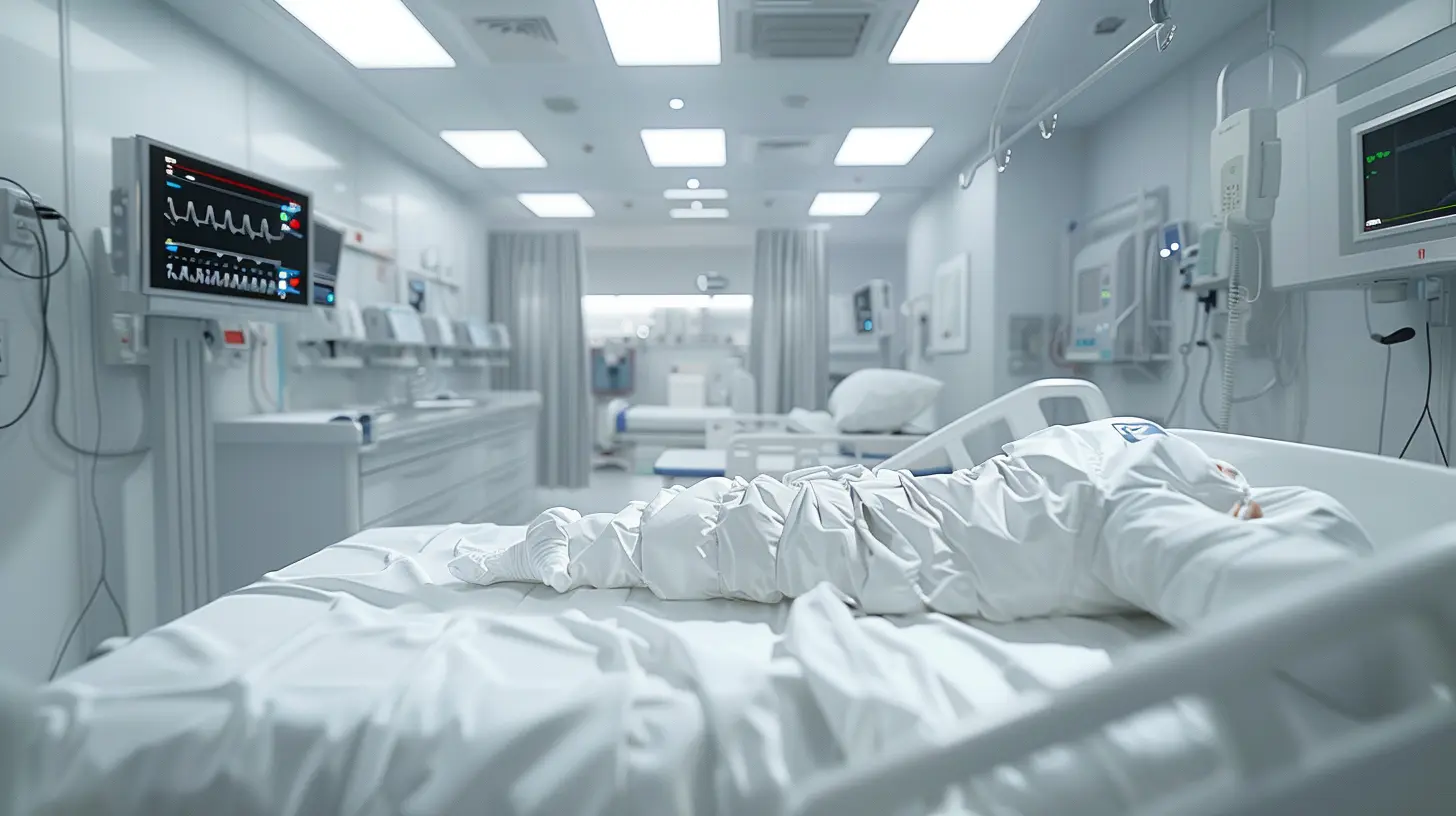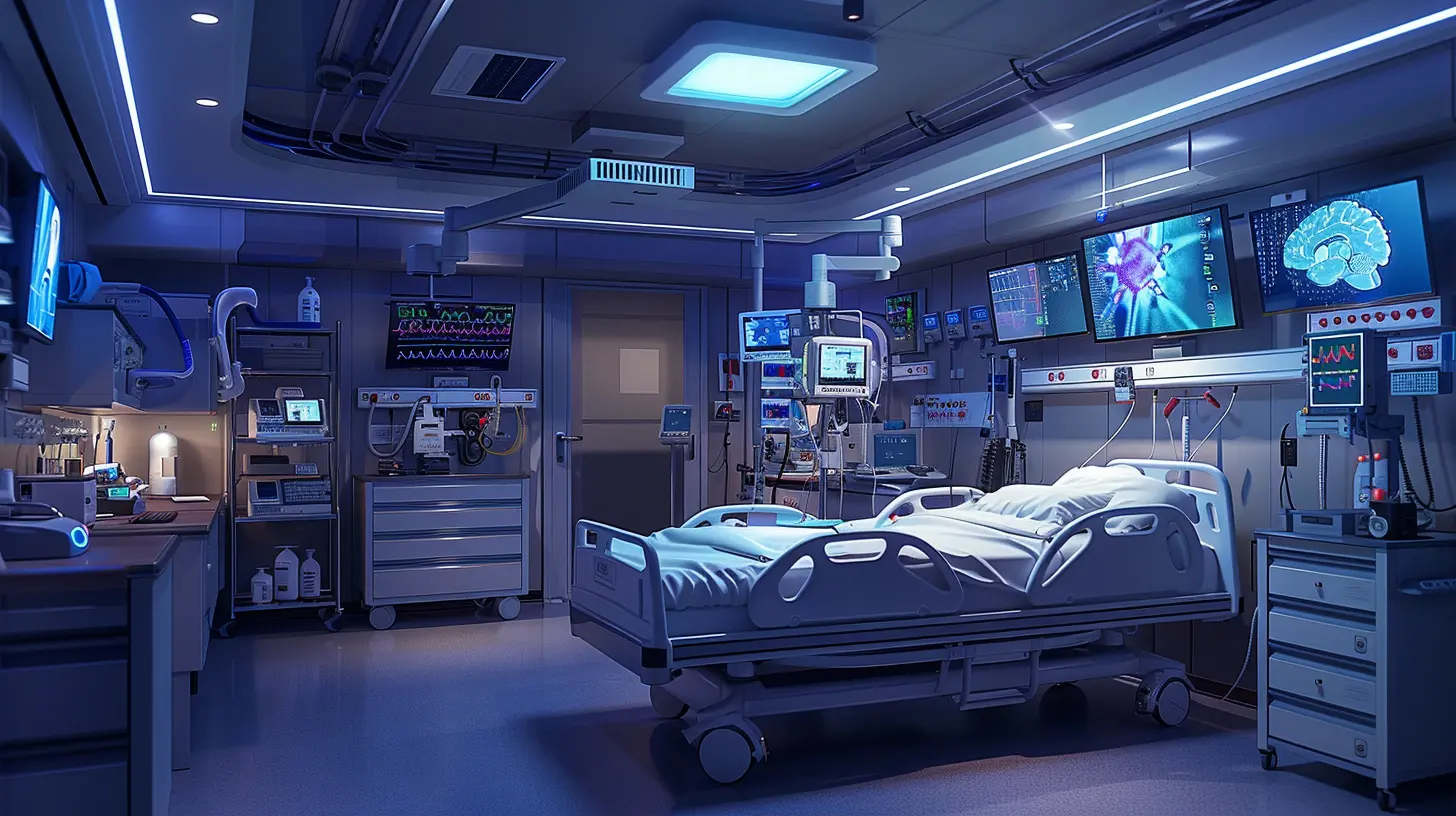Behind the Curtain of Medical Simulators: Mastering Patient Care Digitally
5 October 2025
Think about the last time you played a video game. You might have been solving puzzles, fighting off enemies, or exploring a virtual world. But what if I told you that a similar type of immersive, interactive technology is being used to save lives? That’s right—welcome to the fascinating world of medical simulators.
Medical simulators are like the high-tech training grounds for healthcare professionals. They’re innovative tools that combine advanced technology with realistic scenarios to prepare doctors, nurses, and other healthcare providers for real-life medical situations. Let’s take a deep dive into this incredible digital revolution, where saving lives meets the innovation of virtual mastery.
What Are Medical Simulators, Anyway?
At their core, medical simulators are essentially lifelike tools, often virtual or physical, that mimic real-life medical scenarios. Imagine cutting-edge graphics, motion sensors, and maybe even a mannequin that can talk, breathe, or bleed! Simulators are designed to replicate everything from common medical procedures to rare, high-risk emergencies.These simulators bridge the gap between classroom learning and real-life practice. Instead of learning solely from textbooks or lectures, medical professionals can now "practice on the fly.” It’s like a dress rehearsal for saving lives—no pressure, right?
A Breakthrough in Healthcare Training
So, why exactly are medical simulators such a big deal? Well, picture this: Would you want someone attempting a complex medical procedure on you for the first time without ever having practiced it? Yeah, I didn’t think so. That’s where these simulators come in. They enable healthcare professionals to make mistakes, learn, and improve—all in a risk-free environment. Because let’s face it, everyone makes mistakes at first, but it’s way better to make them on a computer program or a mannequin than on an actual patient.The Learning Curve: From Novice to Expert
Medical simulators are like flight simulators for pilots. Just like a pilot doesn’t jump into an airplane cockpit without extensive training, surgeons, nurses, and EMTs need the same level of preparation. Simulators allow them to hone their skills, perfect their techniques, and understand the consequences of their actions—without jeopardizing human lives.And the best part? These aren’t one-size-fits-all tools. They cater to various levels of expertise, from medical students just starting out to seasoned professionals looking to refine advanced techniques.
Why Digital Training Beats Traditional Learning
We’ve come a long way from dissecting frogs in biology class. Traditional medical training often involved observing experienced doctors and practicing on cadavers. While these methods have their merits, they can’t always replicate the complexities of human anatomy, diverse patient conditions, or emotional reactions. Enter the digital age.Realistic Scenarios Anytime, Anywhere
Think about it—emergencies don’t follow a schedule. But with medical simulators, you can recreate any scenario, anytime. Want to practice delivering a baby in an ambulance during a snowstorm? There’s a simulator for that. Need to learn how to treat a rare infectious disease? Yup, there’s a program for that too.Simulators provide unrivaled consistency and repeatability. You can rehearse the same situation multiple times, altering variables like patient age, weight, or health status to better prepare for the unpredictable nature of real-world medicine.
Building Confidence One Scenario at a Time
Confidence is key in healthcare. Imagine having to make split-second decisions that determine whether someone lives or dies. No pressure, right? Simulators not only teach medical skills but also help build the confidence necessary to handle high-stress scenarios. It’s like role-playing, but with way more at stake.And let’s be honest—having a "digital patient" yell at you is way less intimidating than the real deal. Simulators let practitioners grow their skills and confidence without the fear of harming a human being.
The Tech Behind the Magic: How It All Works
Okay, so we know simulators are high-tech, but what’s actually under the hood? Let’s break it down.Virtual Reality (VR)
VR is a game-changer (literally). Imagine putting on a headset and being instantly transported to the operating room or an ER during a mass casualty event. VR simulators provide immersive environments that feel incredibly real. The visuals are so lifelike, you might forget you're not actually there.Haptic Feedback Technology
Let’s talk touch. Haptic feedback is what allows users to "feel" textures, resistance, and pressure in virtual environments. It’s like when your phone vibrates, but on a whole new level. For example, a surgeon practicing a procedure can feel the resistance while cutting tissue or inserting a needle—just like they would in real life.Artificial Intelligence (AI)
AI is the brainpower behind medical simulators. These systems can analyze a user’s performance in real-time, offering feedback and suggestions for improvement. Think of it as having a personal coach watching your every move (but in a totally non-judgmental way).Benefits That Go Beyond the Classroom
If you think simulators are just for practice, think again. These tools are reshaping not only how medical professionals train but also how they think and operate.Safer for Patients
One of the most obvious benefits, of course, is patient safety. Simulators reduce the risks associated with novice practitioners performing procedures on actual people. By the time they’re working with real patients, their skills are sharp, and they’ve already made their beginner mistakes in a safe space.Cost-Effective in the Long Run
Sure, the upfront investment for a medical simulator can be hefty, but think about the savings in the long run. Fewer errors, better outcomes, and more efficient training all translate to reduced costs for healthcare institutions.Enhanced Collaboration and Communication
Medical scenarios often involve teamwork, and simulators are perfect for fostering these skills. Training as a team in high-pressure scenarios helps healthcare professionals learn how to communicate effectively and work together seamlessly.Challenges in the World of Medical Simulators
As amazing as they are, let’s not kid ourselves—medical simulators aren’t perfect. They come with their own set of challenges.High Costs and Accessibility
Creating hyper-realistic simulators isn’t cheap. Not every hospital or medical school can afford them, which creates disparities in training opportunities. However, as technology becomes more widespread, costs are gradually decreasing.The Limit of Realism
No matter how advanced simulators become, they’ll never fully replicate the nuances of human interaction. Real patients have emotions, unique reactions, and unpredictable behaviors. While simulators come close, there’s still room for improvement.The Future of Medical Simulators
Where are we headed? The future of medical simulators is exciting, to say the least. With advancements in technology, they’re only going to get more realistic, more accessible, and more capable of bridging the gap between virtual training and real-world application.We’re already seeing simulators using augmented reality (AR), where virtual images are overlaid onto the real world. Imagine performing surgery with AR that highlights critical areas in real-time—like having a GPS for your scalpel. Wild, right?
The integration of AI will also continue to improve. Simulators could soon be able to predict a trainee’s decision-making process and provide even deeper insights for improvement. Essentially, the future of medical training is looking more "sci-fi" every day—and that’s a good thing.
Conclusion: Mastering Medicine, One Simulation at a Time
Behind the curtain of medical simulators lies a world of innovation, creativity, and, most importantly, life-saving potential. These digital tools are transforming healthcare training, providing us with a safer, more efficient, and incredibly powerful way to master patient care.So the next time you pick up a controller or put on a VR headset, remember—somewhere out there, a medical professional may be using similar tech to learn how to save a life. And that, my friend, is truly game-changing.
all images in this post were generated using AI tools
Category:
Simulation GamesAuthor:

Leif Coleman
Discussion
rate this article
1 comments
Gabriel Burton
Fascinating peek into medical simulators! It's incredible how gaming tech is enhancing patient care and transforming future doctors' training. Keep it up!
October 8, 2025 at 2:40 PM

Leif Coleman
Thank you! I'm glad you found it fascinating—gaming tech truly is revolutionizing medical training and patient care.


